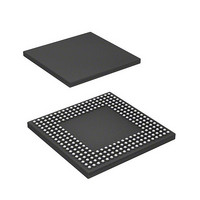HD6417760BL200AV Renesas Electronics America, HD6417760BL200AV Datasheet - Page 182

HD6417760BL200AV
Manufacturer Part Number
HD6417760BL200AV
Description
SH4 7760, 17 X17 256BGA, LCDC, U
Manufacturer
Renesas Electronics America
Series
SuperH® SH7750r
Datasheet
1.D6417760BP200ADV.pdf
(1418 pages)
Specifications of HD6417760BL200AV
Core Processor
SH-4
Core Size
32-Bit
Speed
200MHz
Connectivity
Audio Codec, CAN, EBI/EMI, FIFO, I²C, MFI, MMC, SCI, Serial Sound, SIM, SPI, USB
Peripherals
DMA, LCD, POR, WDT
Number Of I /o
69
Program Memory Type
ROMless
Ram Size
48K x 8
Voltage - Supply (vcc/vdd)
1.4 V ~ 1.6 V
Data Converters
A/D 4x10b
Oscillator Type
Internal
Operating Temperature
-40°C ~ 85°C
Package / Case
256-BGA
Lead Free Status / RoHS Status
Lead free / RoHS Compliant
Eeprom Size
-
Program Memory Size
-
Available stocks
Company
Part Number
Manufacturer
Quantity
Price
Company:
Part Number:
HD6417760BL200AV
Manufacturer:
Renesas Electronics America
Quantity:
10 000
Part Number:
HD6417760BL200AV
Manufacturer:
RENENAS
Quantity:
20 000
- Current page: 182 of 1418
- Download datasheet (9Mb)
The instruction execution sequence is expressed as a combination of the execution patterns shown
in figure 5.2. One instruction is separated from the next by the number of machine cycles for its
issue rate. Normally, execution, data access, and write-back stages cannot be overlapped onto the
same stages of another instruction; the only exception is when two instructions are executed in
parallel under parallel-executability conditions. See (a) to (d) in figure 5.3 for some simple
examples.
Latency is the interval between issue and completion of an instruction, and is also the interval
between the execution of two instructions with an interdependent relationship. When there is
interdependency between two instructions fetched simultaneously, the latter of the two is stalled
for the following number of cycles:
• (Latency) cycles when there is flow dependency (read-after-write)
• (Latency − 1) or (latency − 2) cycles when there is output dependency (write-after-write)
• Five or two cycles when there is anti-flow dependency (write-after-read), as in the following
In the case of flow dependency, the latency may be exceptionally increased or decreased,
depending on the combination of sequential instructions (figure 5.3 (e)).
• When a floating-point computation is followed by a floating-point register store, latency of the
• If there is a load of the shift amount immediately before an SHAD or SHLD instruction,
• If an instruction with latency of less than two cycles, including write-back to a floating-point
The number of cycles in a pipeline stall due to flow dependency will vary depending on the
combination of interdependent instructions or the fetch timing (see figure 5.3 (e)).
Output dependency occurs when the destination operands are the same in a preceding FE group
instruction and a following LS group instruction.
For the stall cycles of an instruction with output dependency, the longest latency to the last write-
back among all the destination operands must be applied instead of "latency" (see figure 5.3 (f)). A
stall due to output dependency with respect to FPSCR, which reflects the result of a floating-point
Rev. 2.00 Feb. 12, 2010 Page 98 of 1330
REJ09B0554-0200
⎯ Single/double-precision FDIV or FSQRT is the preceding instruction: (latency – 1) cycles
⎯ Other instructions in the FE group is the preceding instruction: (latency – 2) cycles
cases:
⎯ FTRV is the preceding instruction: 5 cycles
⎯ Double-precision FADD, FSUB, or FMUL is the preceding instruction: 2 cycles
floating-point computation may be decreased by one cycle.
latency of the load is increased by one cycle.
register, is followed by a double-precision floating-point instruction, FIPR, or FTRV, latency
of the first instruction is increased to two cycles.
Related parts for HD6417760BL200AV
Image
Part Number
Description
Manufacturer
Datasheet
Request
R

Part Number:
Description:
KIT STARTER FOR M16C/29
Manufacturer:
Renesas Electronics America
Datasheet:

Part Number:
Description:
KIT STARTER FOR R8C/2D
Manufacturer:
Renesas Electronics America
Datasheet:

Part Number:
Description:
R0K33062P STARTER KIT
Manufacturer:
Renesas Electronics America
Datasheet:

Part Number:
Description:
KIT STARTER FOR R8C/23 E8A
Manufacturer:
Renesas Electronics America
Datasheet:

Part Number:
Description:
KIT STARTER FOR R8C/25
Manufacturer:
Renesas Electronics America
Datasheet:

Part Number:
Description:
KIT STARTER H8S2456 SHARPE DSPLY
Manufacturer:
Renesas Electronics America
Datasheet:

Part Number:
Description:
KIT STARTER FOR R8C38C
Manufacturer:
Renesas Electronics America
Datasheet:

Part Number:
Description:
KIT STARTER FOR R8C35C
Manufacturer:
Renesas Electronics America
Datasheet:

Part Number:
Description:
KIT STARTER FOR R8CL3AC+LCD APPS
Manufacturer:
Renesas Electronics America
Datasheet:

Part Number:
Description:
KIT STARTER FOR RX610
Manufacturer:
Renesas Electronics America
Datasheet:

Part Number:
Description:
KIT STARTER FOR R32C/118
Manufacturer:
Renesas Electronics America
Datasheet:

Part Number:
Description:
KIT DEV RSK-R8C/26-29
Manufacturer:
Renesas Electronics America
Datasheet:

Part Number:
Description:
KIT STARTER FOR SH7124
Manufacturer:
Renesas Electronics America
Datasheet:

Part Number:
Description:
KIT STARTER FOR H8SX/1622
Manufacturer:
Renesas Electronics America
Datasheet:

Part Number:
Description:
KIT DEV FOR SH7203
Manufacturer:
Renesas Electronics America
Datasheet:











